Everything About Robotic Total Knee Replacement and its Treatment
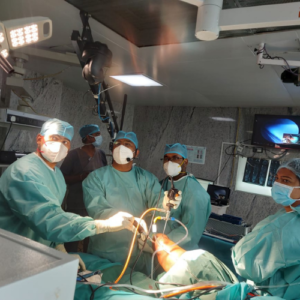
A robotic knee replacement is similar to a standard knee replacement in that it replaces the knee joint. Damaged tissue in your knee is removed and replaced with an artificial joint by your surgeon. The only difference is that it's made with the help of a robotic arm.
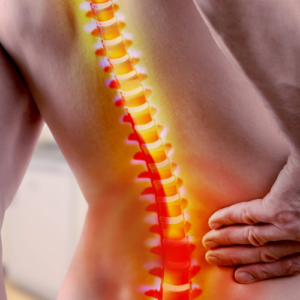
What Endoscopic Lumbar Fusion ?
A common Endoscopic fusion is the transforaminal lumbar interbody fusion (TLIF) Using this technique, the surgeon approaches the spine a little bit from the side, which reduces how much of the spinal nerve must be moved.
What Endoscopic Lumbar Fusion ?

A common Endoscopic fusion is the transforaminal lumbar interbody fusion (TLIF) Using this technique, the surgeon approaches the spine a little bit from the side, which reduces how much of the spinal nerve must be moved.
Recovery Rate
Minimally invasive spine procedures will shorten hospital stays or even enable the surgery to be performed on a daycare surgery. The exact time needed in the hospital will vary with the individual procedure, but in general: • Minimally Invasive Spine Surgery patients go home same day or in 1 to 2 days. • Most patients having open spine surgery stay in the hospital for 3 to 5 days. Because minimally invasive techniques do not disrupt muscles and soft tissues, it is believed that postoperative pain is less than pain after open procedures. To help regain strength and speed the recovery, your doctor may recommend physiotherapy. This will depend on the procedure and your general physical condition. Specific exercises will help you become strong enough to return to work and daily activities. If you have had a fusion procedure, it may be several months before the bone solidifies. Your comfort level, however, will often improve much faster. During this healing time, the fused spine must be kept in proper alignment. You will be taught how to move properly, reposition, sit, stand, and walk. The time it takes to return to your daily activities after Minimally Invasive Spine Surgery depends upon your individual procedure and condition. Your doctor will evaluate you after your surgery to make sure that your recovery is progressing as expected.

Recovery Rate

Minimally invasive spine procedures will shorten hospital stays or even enable the surgery to be performed on a daycare surgery. The exact time needed in the hospital will vary with the individual procedure, but in general: • Minimally Invasive Spine Surgery patients go home same day or in 1 to 2 days. • Most patients having open spine surgery stay in the hospital for 3 to 5 days. Because minimally invasive techniques do not disrupt muscles and soft tissues, it is believed that postoperative pain is less than pain after open procedures. To help regain strength and speed the recovery, your doctor may recommend physiotherapy. This will depend on the procedure and your general physical condition. Specific exercises will help you become strong enough to return to work and daily activities. If you have had a fusion procedure, it may be several months before the bone solidifies. Your comfort level, however, will often improve much faster. During this healing time, the fused spine must be kept in proper alignment. You will be taught how to move properly, reposition, sit, stand, and walk. The time it takes to return to your daily activities after Minimally Invasive Spine Surgery depends upon your individual procedure and condition. Your doctor will evaluate you after your surgery to make sure that your recovery is progressing as expected.
Causes
Spinal fractures or external injuries
Metastatic tumors in the spine
Dystrophic Disc Disease
Congenital spinal cord abnormalities
Scoliosis
Spondylolisthesis problems led the connective tissues
shoddy lifting methods
Symptoms
- Back pain that gets worse when lifting things, bending, or straightening the spine
- A sensation of being locked in while doing a bodily action, such getting out of a chair
- spasms of muscles
- Legs and buttocks pain that typically only affects one side of the body may radiate down.
- Arms and lower extremities that are numb
- After extended sitting or standing, the symptoms could worsen.
Pain can also be brought on by laughing, coughing, or sneezing.
Causes
Spinal fractures or external injuries
Metastatic tumors in the spine
Dystrophic Disc Disease
Congenital spinal cord abnormalities
Scoliosis
Spondylolisthesis problems led the connective tissues
shoddy lifting methods
Symptoms
- Back pain that gets worse when lifting things, bending, or straightening the spine
- A sensation of being locked in while doing a bodily action, such getting out of a chair
- spasms of muscles
- Legs and buttocks pain that typically only affects one side of the body may radiate down.
- Arms and lower extremities that are numb
- After extended sitting or standing, the symptoms could worsen.
Pain can also be brought on by laughing, coughing, or sneezing.
Diagnosis
Test
For the surgery
Test
MRI and CT scan records can be used to collect information about the patient’s medical history and way of life. back pain that gets worse when lifting things, bending, or straightening the spine
To examine the changes in the bone structure, X-ray imaging may be required in both the sitting and standing positions.
In order to simulate circumstances that are likely to result in pain, the doctor may probe the spine. This aids in identifying the movement patterns and pain pattern.
For the surgery
• The patient is positioned face-down, and the surgeon makes a small incision over the location of the herniated disc.
• The surgeon inserts the retractor and removes a small amount of the lamina bone. This provides the surgeon with a view of the spinal nerve and the disc.
• The surgeon carefully retracts the nerve and removes only the damaged disc.
This minimally invasive technique can also be used for herniated discs in the neck. The procedure is done through the back of the neck and is called an Endoscopic posterior cervical foraminotomy/discectomy.
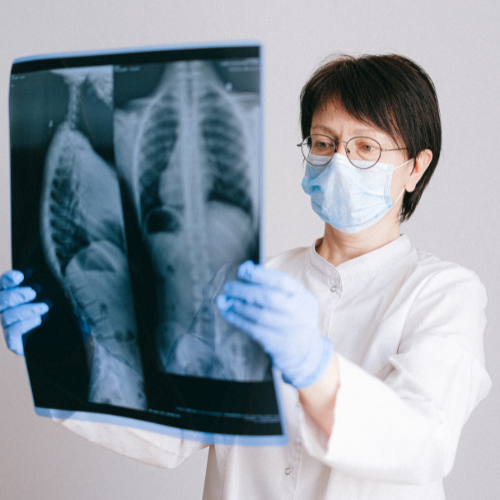
Diagnosis
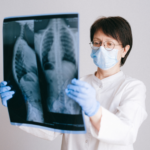
Test
For the surgery
Test
MRI and CT scan records can be used to collect information about the patient’s medical history and way of life. back pain that gets worse when lifting things, bending, or straightening the spine
To examine the changes in the bone structure, X-ray imaging may be required in both the sitting and standing positions.
In order to simulate circumstances that are likely to result in pain, the doctor may probe the spine. This aids in identifying the movement patterns and pain pattern.
For the surgery
• The patient is positioned face-down, and the surgeon makes a small incision over the location of the herniated disc.
• The surgeon inserts the retractor and removes a small amount of the lamina bone. This provides the surgeon with a view of the spinal nerve and the disc.
• The surgeon carefully retracts the nerve and removes only the damaged disc.
This minimally invasive technique can also be used for herniated discs in the neck. The procedure is done through the back of the neck and is called an Endoscopic posterior cervical foraminotomy/discectomy.
Risks & Complications
Risk and Complaications
Risk and Complaications
- There could be risks involved with MISS, just like there are with any operation. MISS has less problems than open spinal fusion surgery, according to some research, however they are comparable. Your surgeon will go over all of the risks with you before the procedure and will take particular precautions to help prevent any potential issues. The following issues could arise from MISS:
• Illness. To reduce the risk of infections, antibiotics are frequently administered to the patient prior to, during, and often after surgery.
• Bleeding. Although there may likely be some bleeding, it won’t usually be much.
• A graft site that stings. At the site of the bone graft, a small minority of patients will have ongoing pain.
• Constant symptoms Some patients could relapse with their initial symptoms.
• Pseudoarthrosis – This condition prevents a spinal fusion from fully healing because not enough bone is formed. If this happens, more surgery might be required to achieve a strong fusion. Smokers are more likely to experience pseudarthrosis.
Advantages of Minimally Invasive Spine Surgery
- • Smaller incision than traditional spine surgery
• less post operative pain
• Less invasive hence less soft tissue and ligament damage intra-operatively
• Can go home the same day or the next day
• Can walk from the next day itself.
• Faster recovery than open spine surgeries
Advantages of Minimally Invasive Spine Surgery
- Smaller incision than traditional spine surgery
• less post operative pain
• Less invasive hence less soft tissue and ligament damage intra-operatively
• Can go home the same day or the next day
• Can walk from the next day itself.
• Faster recovery than open spine surgeries
Risks & Complications
Risks & Complications
Risks & Complications
- There could be risks involved with MISS, just like there are with any operation. MISS has less problems than open spinal fusion surgery, according to some research, however they are comparable. Your surgeon will go over all of the risks with you before the procedure and will take particular precautions to help prevent any potential issues. The following issues could arise from MISS:
- Illness. To reduce the risk of infections, antibiotics are frequently administered to the patient prior to, during, and often after surgery.
- Bleeding: Although there may likely be some bleeding, it won’t usually be much.
- A graft site that stings. At the site of the bone graft, a small minority of patients will have ongoing pain.
- Constant symptoms Some patients could relapse with their initial symptoms.
- Pseudoarthrosis – This condition prevents a spinal fusion from fully healing because not enough bone is formed. If this happens, more surgery might be required to achieve a strong fusion. Smokers are more likely to experience pseudarthrosis.
When to consult a doctor ?
In the following three conditions, you should consider immediate medical help:
About symptoms: One of your legs may experience tingling, pain, or weakness as a result of the condition.
Our Specialist

***
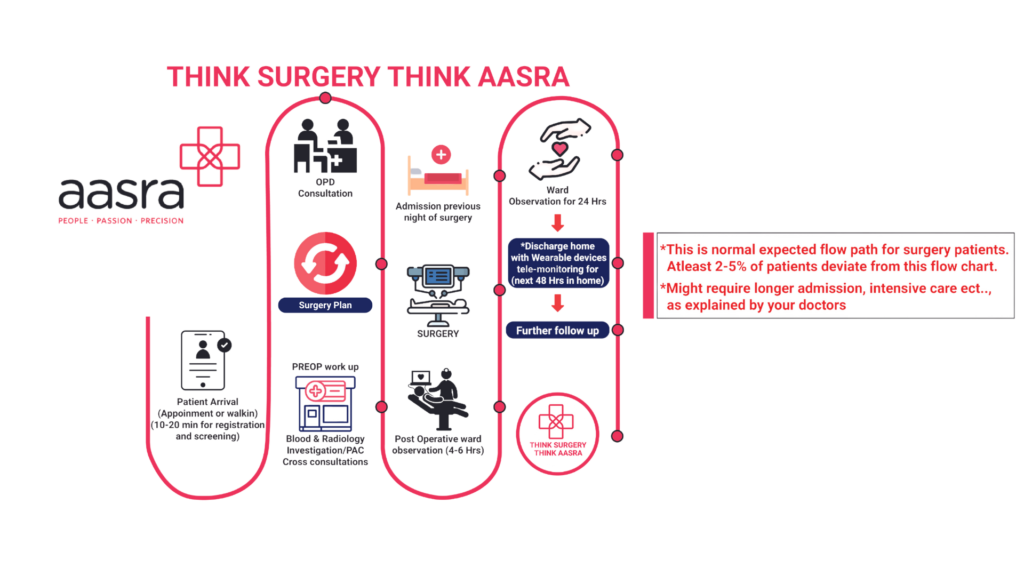
When to consult a doctor ?
In the following three conditions, you should consider immediate medical help:
About symptoms: One of your legs may experience tingling, pain, or weakness as a result of the condition.
Our Specialist

***
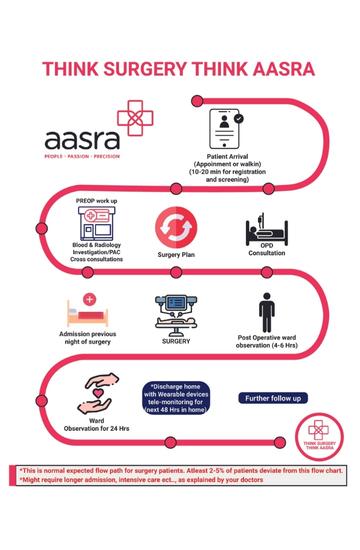

Insurance coverage
Insurance does cover the cost of the surgical procedure for a hysterectomy performed due to adenomyosis because it is on the list of procedures that are "medically required." The cost capping, however, may change from instance to case. Please get your healthcare or insurance company to validate this.
Insurance coverage

Insurance does cover the cost of the surgical procedure for a hysterectomy performed due to adenomyosis because it is on the list of procedures that are "medically required." The cost capping, however, may change from instance to case. Please get your healthcare or insurance company to validate this.
Frequently Asked Questions
Frequently Asked Questions
Facts and figures around robotic hip replacement
Why choose Aasra for robotic knee replacement treatment?
AASRA Hospital has the state of the art technology for performing joint replacement surgeries i,e MAKO Robitic joint replacement technology.
There is less post operative pain, reduced hospital stay ,patient can walk early and early recovery .
How to book appointment for aasra
Booking an appointment with a Aasra Orthopedician is easy.
Simply give us a call directly or complete our online appointment booking form. The only four questions it would ask you are “Your name,” “Contact,” and “tell us a little more about yourself.” Simply complete the form and press “submit.” One of our medical coordinators will give you a call soon to assist you in speaking with the doctor of your choice.
Facts and figures around robotic hip replacement
Why choose Aasra for robotic hip replacement treatment?
AASRA Hospital has the state of the art technology for performing joint replacement surgeries i,e MAKO Robitic joint replacement technology.
There is less post operative pain, reduced hospital stay ,patient can walk early and early recovery .
How to book an appointment for aasra?
Booking an appointment with a Aasra Orthopedician is easy.
Simply give us a call directly or complete our online appointment booking form. The only four questions it would ask you are “Your name,” “Contact,” and “tell us a little more about yourself.” Simply complete the form and press “submit.” One of our medical coordinators will give you a call soon to assist you in speaking with the doctor of your choice.
